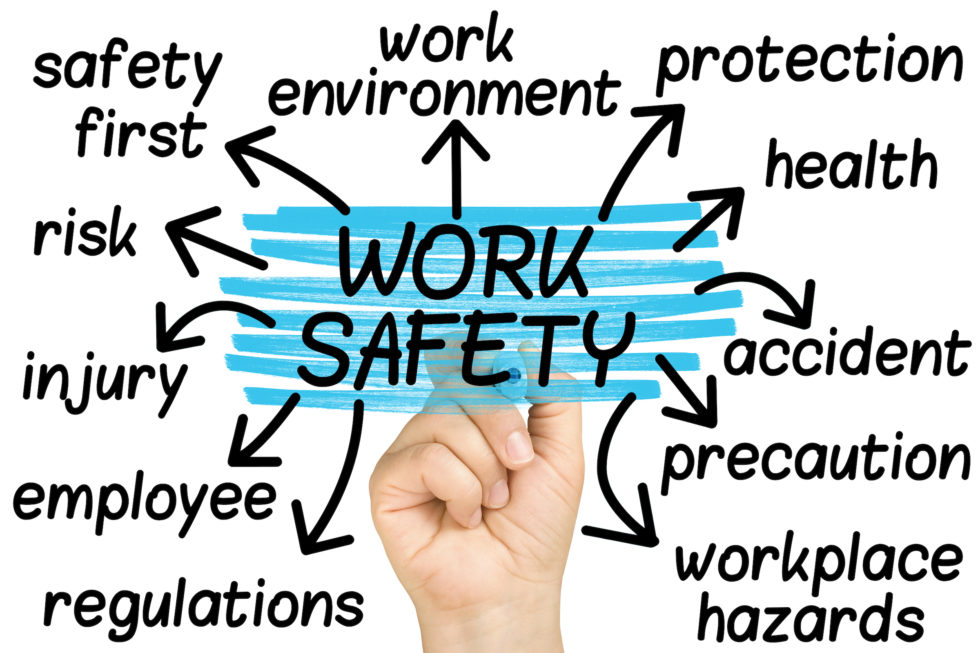
In part four of this blog series, we peek further into the world of The (New Zealand) Health and Safety at Work Act 2015 (HSWA), breaking it down, section by section. We will provide you with our insight into what the respective section means for a PCBU (Person conducting a business or undertaking – the technical term for a business or business owner), provide some practical advice on what the requirement looks like in reality and provide some issues to consider when applying or aiming to achieve these requirements.

In the intricate landscape of workplace safety in New Zealand, the Health and Safety at Work Act 2015 (HSWA) stands as a beacon. Today, let’s shine a light on Section 37, a pivotal part of the Act that delineates the duties of a person conducting a business or undertaking (PCBU) who manages or controls the workplace.
The Health and Safety at Work Act 2015 (HSWA) is a significant piece of legislation in New Zealand and can be viewed as a little complex. So, let’s dive into the next instalment and help you better understand its requirements for Kiwi businesses.
So, what does the legislation say?
Section 37 of the HSWA states:
A PCBU that manages or controls a workplace must ensure, so far as is reasonably practicable, that the workplace, the means of entering and exiting the workplace, and anything arising from the workplace are without risks to the health and safety of any person.
However, a PCBU does not owe a duty to anyone at the workplace for an unlawful purpose. Also, in relation to farms, it does not apply to main dwellings and only applies to other areas where work is being carried out and when work is being done.
A PCBU, who manages or controls a workplace, owes a duty when their business or undertaking involves the management or control (in whole or in part) of the workplace. Section 20 of HSWA provides a definition of the workplace, but in the basic sense, it’s a place where work is carried out.
Some exceptions to this section relate to occupiers of a residence unless it is occupied in full or in part to conduct a business or undertaking and regarding prescribed persons.
So, what does it mean to a business owner?
For a business owner, this section places a profound responsibility on your shoulders. If you manage or control a workplace, it’s not just about the safety of your employees. It’s about ensuring that the physical space, access points, and anything originating from your workplace poses no health and safety risks to anyone—employees, visitors, or the broader public.
So, what does this look like in reality?
In practical terms, a business owner who owns, controls, leases or shares a workplace with another business should consider such things as:
– Comprehensive Workplace Assessment: Regularly assess the entire workplace for potential hazards. This includes the physical space, equipment, and any materials used or produced.
– Risk Control: Implementing measures to eliminate or minimise these risks. This could include providing workers with appropriate training and protective equipment where the risk can’t be minimised, maintaining equipment properly, and implementing safe work procedures.
– Monitoring and Review: Regularly reviewing and updating risk control measures to ensure their effectiveness and making necessary adjustments as the business evolves.
– Emergency Preparedness: Having a plan for first aid facilities and emergencies that includes the periodic checking that exit routes are clear and procedures for evacuation are adequate and tested regularly.
– Safe Entry and Exit Points: Ensure that entering and exiting the workplace is safe for everyone. This may involve well-maintained pathways, clear signage, and unobstructed emergency exits.
– Visitor Safety Protocols: If your workplace receives visitors, have clear safety protocols in place for them. This might include providing safety briefings or induction and having designated visitor areas.
– Equipment Maintenance: Regularly maintain and assess all equipment used in the workplace to prevent malfunctions that could pose risks. It would be best also to consider increasing maintenance frequencies when using older plant and equipment and adjusting them to account for age, general wear and tear, and the time that has elapsed between previous breakdowns
– Material Handling: Implement safe practices for handling and disposing of materials from workplace operations and activities to prevent environmental and health hazards.
– Training and Communication: Ensure all workers, including visitors, know safety protocols through practical training and communication channels.
– Conducting Regular Reviews: Periodically review and update safety measures based on changes in the workplace or new risks that may arise.
So, what’s the risk?
Section 37 reminds us that as a business owner, your duty of care extends to every nook and cranny of your workplace. It’s not just about complying with the law; it’s about creating an environment where everyone can work and interact without fear of harm. Embracing this duty doesn’t just protect you legally; it safeguards the wellbeing of everyone connected to your business. Safety isn’t just a requirement; it’s a commitment to a better, healthier workplace.
Remember, the goal is to make the workplace as safe as reasonably practicable. This involves considering what can be done and what is reasonable to do in the circumstances and then doing what is reasonably practicable.
The Safety Lab NZ can help you with all aspects of your primary duty of care. We offer health check audits, training services, and technical solutions to help you comply with the HSWA and create a safe and healthy workplace that helps you effectively manage your suppliers, contractors, and consultants. Contact us today to find out how we can assist you.